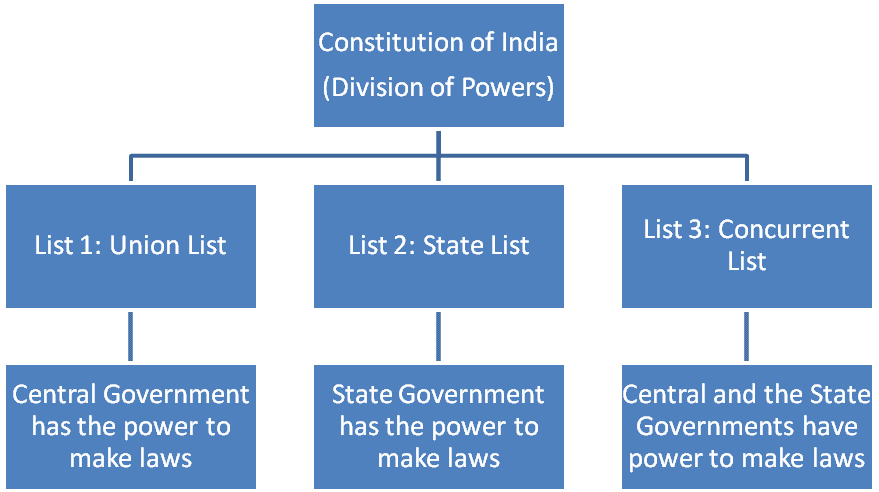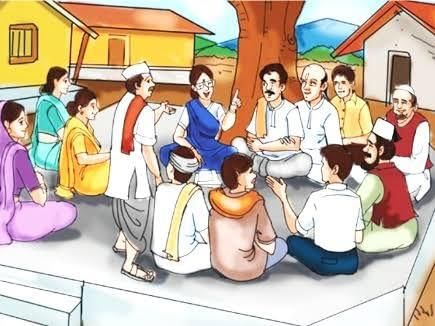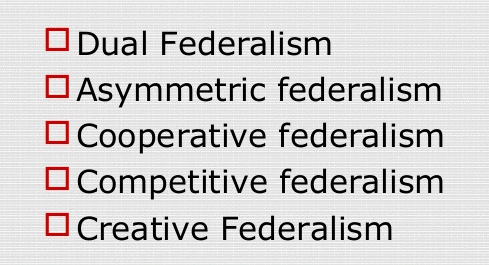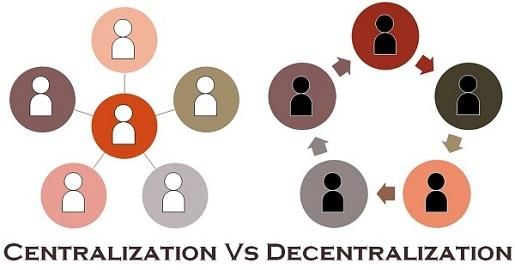Federalism Chapter Notes - Class 10 PDF Download
Federalism: Federalism is a system of government in which the power is divided between a central authority and various constituent units of the country. Fig: Federalism
Fig: Federalism
Unitary System: Unitary system is a system of government in which either there is only one level of government or sub units are subordinate to the central government.
Jurisdiction: The area over which someone has legal authority may be defined in terms of geographical units or in terms of geographical units or in terms of certain/specific matters, is known as Jurisdiction.
Tier system: Tier system is the system which signifies levels of government. It may be two levels or two tiers and three levels or three tiers.
Coming Together Federation: It is a type of federation in which independent states come together on their own to form a bigger unit so that by pooling sovereignty and retaining identity they can increase their security.
Holding Together Federation: It is a type of federation in which a large country decides to divide its power between the constituent states and the National government.
List System: List System states the distribution of powers or subjects through the list like Union List for central/union level, state list for the state level, etc. It is the specific feature of Indian federalism. Fig: List system in IndiaUnion List: It is the list given under the Jurisdiction of Union government. It includes the subjects or matter of national importance like defence, finance, external affairs, currency, etc. Union government alone can make laws on the Union List subjects.
Fig: List system in IndiaUnion List: It is the list given under the Jurisdiction of Union government. It includes the subjects or matter of national importance like defence, finance, external affairs, currency, etc. Union government alone can make laws on the Union List subjects.
State List: State List is given under the jurisdiction of State Government. It includes the subjects or matters of state and local importance. State government alone can make laws on the state list subjects.
Concurrent List: The concurrent list stands for the subjects of common interest to both the Union Government as well as the state government. For the concurrent list subjects, both the Union as well as the state government can make laws.
Residuary subjects: Residuary subjects are the leftover subjects which do not fall in any one of the three lists. One of the residuary subjects only the union government can legislate e.g., computer software and the internet.
Union Territories: Union Territories are the areas which are run by the Union Central government. They are too small to become an independent state but could not be merged with any of the existing states. E.g., Chandigarh.
Ans: It is a council consisting of several ward members, often called panch and a president or a sarpanch.
Ques 2: What is a Panchayat Samiti?
Ans: A few gram panchayats are grouped together to form a panchayat Samiti or Block or a Mandal.
 Fig: Panchayat Samiti
Fig: Panchayat SamitiAns: A Mayor is an elected Chairperson of the Municipal Corporation.
Ques 4: Mention any four features of the federalism.
Ans:
2. Different tiers of government govern the same citizens.
3. The fundamental provisions of the government cannot be unilaterally changed by one level of government.
4. It has a dual objective, i.e., to safeguard and promote the unity of the country, and also to accommodate the regional diversity.
Ques 5: Why were the linguistic states created? What are their advantages?
Ans. The Linguistic states were created to ensure that the people who spoke the same language lived in the same state.
2. It has also made the administration easier.
Ques 6: Mention any four difficulties of local government in India.
Ans:
2. There is a shortage of resources.
3. Elections are not held regularly.
4. Gram Sabha are not held regularly.
Ans: Every adult of the village who is 18 years of age constitutes the Gram Sabha.
1. It is the decision making the body of the entire village.
2. The village panchayat works under the supervision of the Gram Sabha.
3. It approves the annual budget of the Gram Panchayat.
Ans: Rural local government is known as the Panchayati Raj.
1. It helps the people to directly participate in decision making.
2. It helps in the decentralization of power.
3. It reduces the burden of the central government.
Ans: Coming Together federations
1. Under this independent states come together on their own to form a bigger unit.
2. Under this, all constituent states usually have equal power.
3. USA, Switzerland, and Australia
Holding together federations
1. Under this, a large country decides to divide its power between the constituent states and the national government.
2. Under this central government tend to be more powerful.
3. India, Spain, and Belgium.
Union List
1. It includes subjects of national importance. This list consists of 97 subjects. Most important among these are defence, atomic energy, foreign affairs, etc.
2. The parliament is solely empowered to enact laws on subjects included in the Union List.
State List
1. State list contains subjects of state and local importance such as police, trade. It has altogether 66 subjects.
2. The state legislature along can make laws relating to the subjects mentioned in the State List.
Concurrent List
1. It includes subjects of common interests to both the union government as well as the state government, such as education, forests, trade unions, marriage, adoption and successions, press, etc.
2. Both the union as well as state governments can make laws on the concurrent List subjects. But in case of a conflict between the central and states laws, central law prevails.
3. Distinguish between the Federal form of government and Unitary form of government.
Federal form of government
1. Under the federal system, there are two levels of government, one at the central level and other at the state level. Both levels have their areas of jurisdiction.
 Fig: Types of Federalism.2. In the federal system a state government has a power of its own for which it is not answerable to the central government.
Fig: Types of Federalism.2. In the federal system a state government has a power of its own for which it is not answerable to the central government.
3. The central government cannot order the state government to do something.
Unitary form of government.
1. But in Unitary form of government either there is only one level of government or the sub-units are subordinate to the central government.
2. On the other hand in the unitary system the state government does not have the power of its own.
3. The central government can pass on orders to the local government.
Ques 10: What is the importance or need for decentralization?
Ans:
1. The basic idea behind decentralization is that there are a large number of problems and issues which are best settled at the local level. People have a better knowledge of problems in their localities. They also have better ideas on where to spend money, and how to manage things more efficiently.
 2. At the local level, it is possible for the people to directly participate in decision making. This helps to inculcate a habit of democratic participation. Local government is the best way to realize one important principle of democracy, namely the local self-government.
2. At the local level, it is possible for the people to directly participate in decision making. This helps to inculcate a habit of democratic participation. Local government is the best way to realize one important principle of democracy, namely the local self-government.
Ques 11: Explain the major key features of federalism.
Ans:
1. Two or more levels or government:- Federalism is a system of government in which the government is divided between a central authority and its various constituent units. Usually, a federation has two levels of government. One is the government for the entire country and the other governments at the state or provincial level.
2. Same citizens separate jurisdiction:- Different tiers of government govern the same citizens, but each tier has its own jurisdiction in specific matters of legislation, taxation, and administration.
3. Superiority of constitution: The jurisdiction of the respective levels or tiers of government are specified in the constitution. So the existence and authority of each tier of government are constitutionally safeguarded.
4. Rigid constitution: The fundamental provisions of the constitutions cannot be unilaterally changed by one level of government. Such changes require the consent of both the levels of government.
5. Dual objective: The federal system thus has dual objectives: to safeguard and promote the unity of the country, while at the same time, accommodate the regional diversity.
FAQs on Federalism Chapter Notes - Class 10
| 1. What is federalism? |  |
| 2. How is federalism different from unitary system? |  |
| 3. What are the advantages of federalism? |  |
| 4. What are the disadvantages of federalism? |  |
| 5. How does federalism work in India? |  |

|
Explore Courses for Class 10 exam
|

|


















